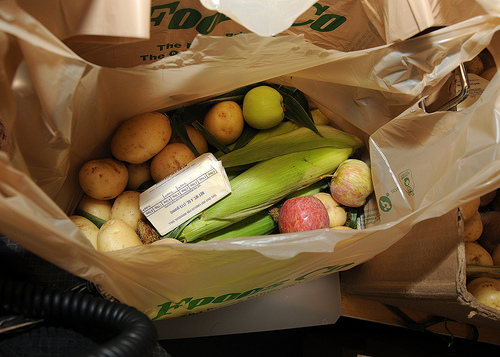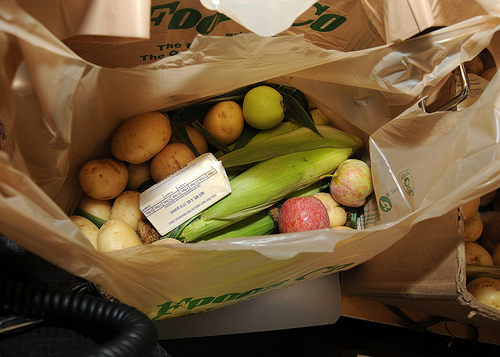What should we make of the USDA’s “Know Your Farmer, Know Your Food” initiative, which the agency rolled out this week?
 USDA via FlickrAfter hearing USDA official Ann Wright’s remarks Tuesday in Chicago and reading through the press release, I’m both encouraged and skeptical.
USDA via FlickrAfter hearing USDA official Ann Wright’s remarks Tuesday in Chicago and reading through the press release, I’m both encouraged and skeptical.
Speaking to attendees at the Chefs Collaborative Summit — an audience consisting mainly of chefs who normally think more about flavor and farmers than policy — Wright was vague, brief, and didn’t seem in tune with what was happening at the home office back in Washington. (For example, she didn’t seem to have read the press release that the USDA had released that day.)
But she got across her message: the USDA is determined to put resources into the challenging task of rebuilding local and regional food systems. The audience cheered her enthusiastically.
First, let’s be clear on what the USDA is up to here. It is not committing new money to local and regional food systems. As Wright confirmed in a brief conversation after her talk, “Know Your Farmer” is really about publicizing programs laid out in the 2008 Farm Bill–prodding local food activists and entrepreneurs to apply for already available funds.
Asked by reporters how much money is available, Wright replied that the programs in question amount to “several hundred million” dollars. But she stressed that this amount will probably not go enirely to local and regional food initiatives. Instead, the number encompasses the total value of USDA programs that are open to such initiatives, but are not exclusively for such initiatives.
Thus local and regional food systems, in dire need of infrastructure investment, will likely receive less than “several hundred million” dollars over the life of the current farm bill, which ends in 2013. By contrast, industrial-scale corn producers routinely grab between $4 billion and $9 billion in crop subsidies each year. Overall, payments to producers of “program crops” — corn, soy, cotton, rice, etc. — reach as high as $24 billion some years. “Know Your Farmer” won’t change that huge imbalance. (For starters, $4.8 million will go to projects in 14 states, USDA announced today.)
So it’s hardly a revolutionary program.
Even so, it’s remarkable and to my knowledge unprecedented that the USDA is making a major effort to publicize these programs and ensure that at least some federal money flows into emerging alternative food systems.
USDA leadership can’t change the structure of the Farm Bill, but the agency does decide how farm bill programs play out. And the Obama USDA seems determined to do what it can to use existing rural-developent programs in a progressive way.
Of course, USDA also remains capable of playing its time-tested role or promoter and protector of Big Ag. Consider that in the current fiscal year, the agency has spent $151 million in taxpayer cash on mass-produced meat to bolster the struggling pork industry. For perspective on such meat-industry bailouts, see this lucid and important post from Elanor Starmer on Ethicurean.
The way I see the Obama USDA, it’s got its foot in two camps — one on the old industrial ag side, the other in the emerging paradigm of ecologically and socially responsible food.
That dualism may disappoint sustainable food activists; but it should be remembered that under past administrations, the USDA marched with both feet to to the agribusiness drummer.
After Wright’s talk, in a huddle of reporters, I got her to pretty much confirm rumors that I’ve been hearing for months: that Michelle Obama is pushing for food-system change from her perch in the East Wing. When I asked whether the First Lady is involved in food policy, Wright perked up, smiled, and said that the USDA is now in “regular contact” with the East Wing.
There are no doubt forces within the administration that favor the approach to agriculture championed by the late Norman Borlaug: big, top-down, tech-centered, and corporate-friendly solutions to the problem of feeding the nation and world. Let’s hope that Michelle Obama and her crew keep standing up to them.




